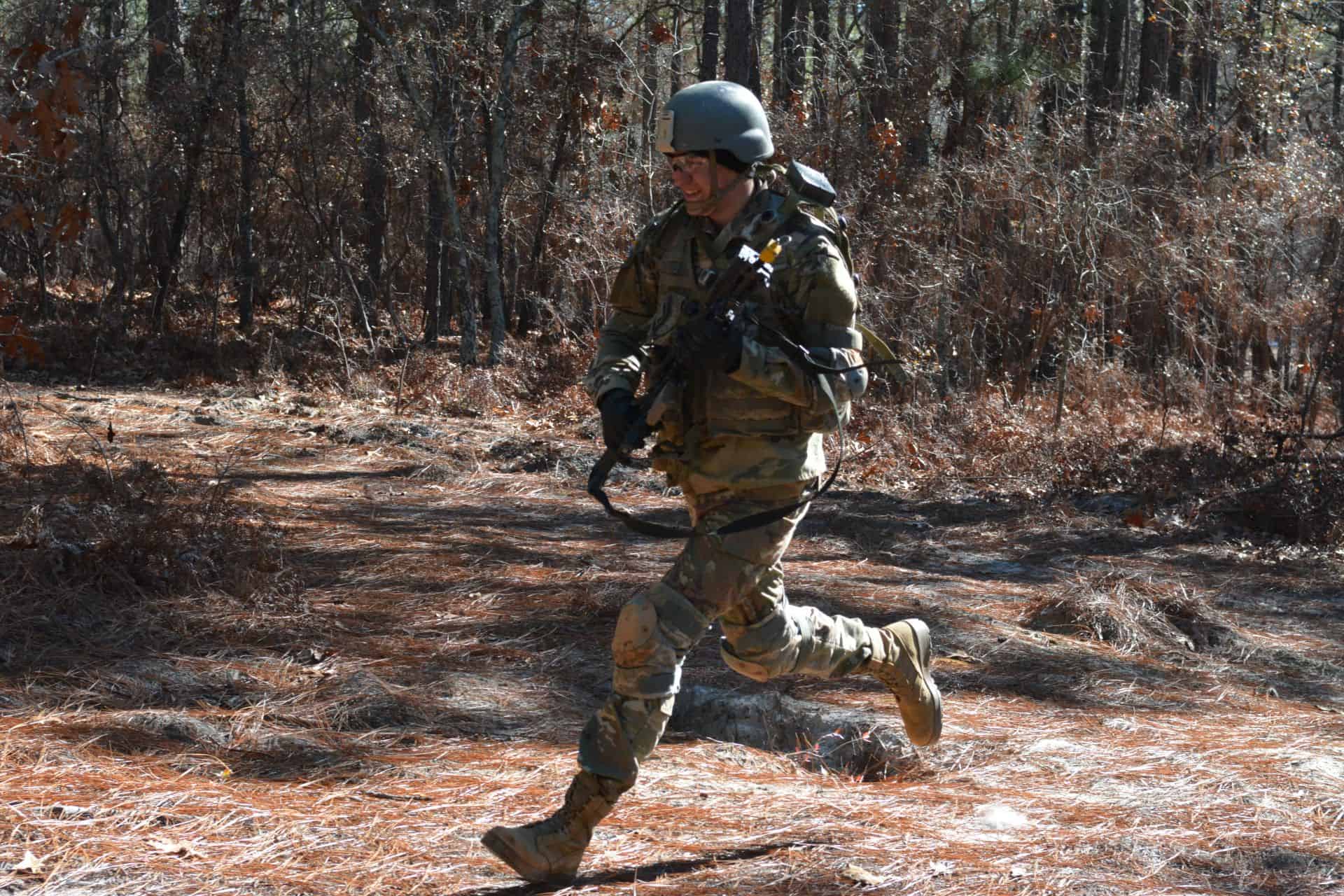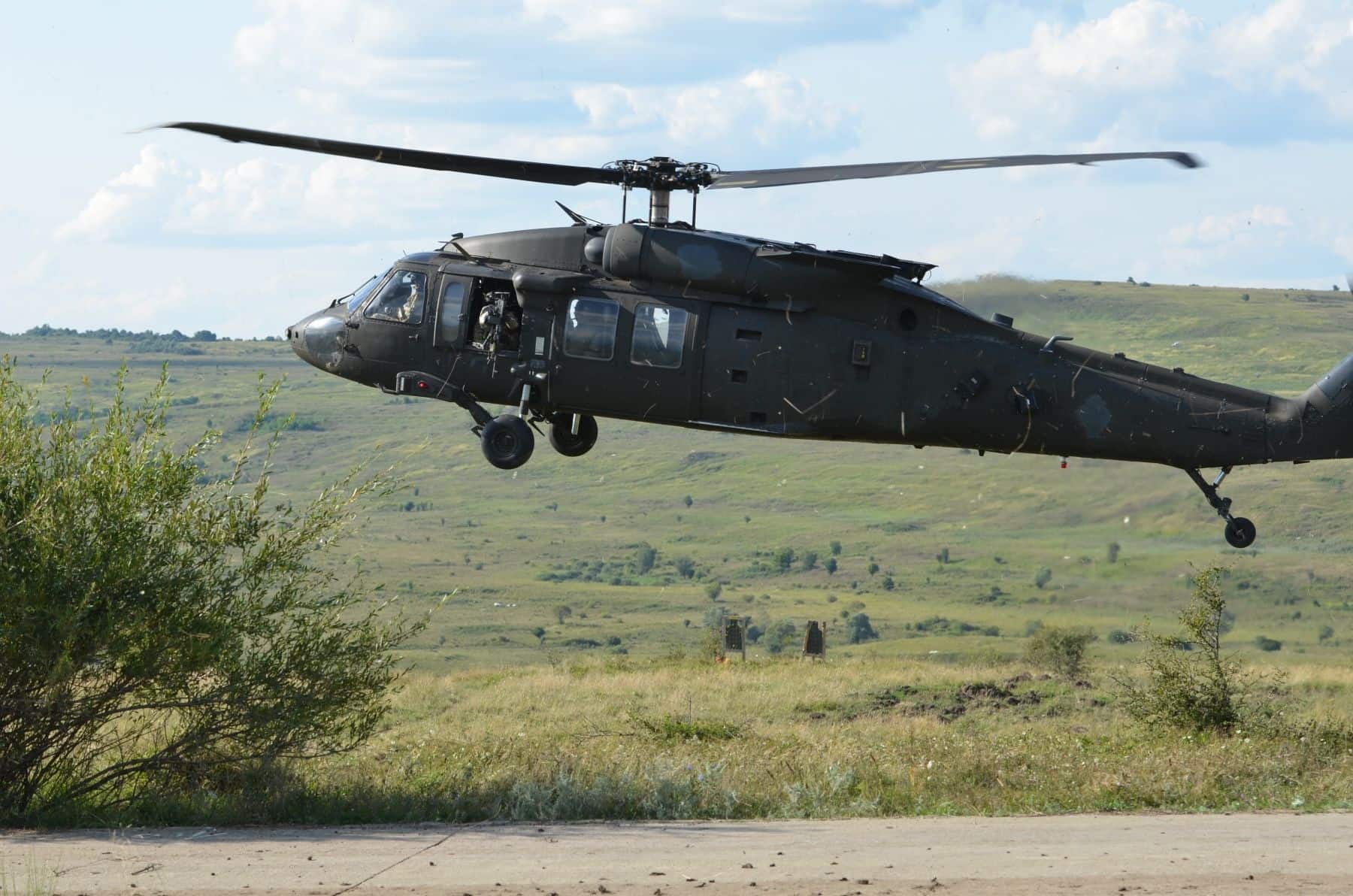FORT JACKSON, S.C.: Even today, two decades into the 21st century, the multiple integrated laser engagement system, or MILES, still sounds like a gadget out of “Star Trek.”
The gear uses lasers and blank cartridges to simulate actual battle, giving Soldiers and trainees the kind of instant feedback usually reserved for video games. The weapons recoil when fired, the smell of gunpowder hanging in the air is palpable, and the electronic tones that track simulated gunfire provide a sense of immediacy that might otherwise be missing from standard buddy training maneuvers.
MILES is hardly a new concept, though. The system was introduced to Army during the late 1970s, years before the Soldiers now in training at Fort Jackson were even born. The system’s popularity in Army training centers has been subject to the usual kinds of external influences that affect all military training, with its stock recently rising on post courtesy of new training initiatives driven by Fort Jackson and Army Training Center commander, Maj. Gen. Pete Johnson.
“MILES is a good tool,” said 1st Lt. Adam Pastor, executive officer for Bravo Company, 4th Battalion, 39th Infantry Regiment, whose trainees put the gear back into use on the morning of Jan. 18. It’s a strange sign of the times that gun-mounted lasers almost represent a back-to-basics approach for training, but Pastor said the trainees — in their eighth week of Basic Combat Training — were undaunted by either the technical challenge of the enhanced weapons, or by the frigid temperatures that had threatened to hamper operations on the installation all week.
“They’re cold, but they’re motivated,” Pastor said. “Once (the trainees) see a couple of runs and see what they’ve supposed to be doing, they’ll grab hold and execute well.”
MILES is designed to replicate both the firing capabilities and effects of weapons during simulated combat. The gear can detect hits from laser “bullets” and keep track of damage assessments for everyone involved. There are immediate audio cues to let trainees know when simulated rounds are coming close to their position. For those less fortunate, an ominous tone also lets them know when they’ve been taken off the battlefield.
“Conceptually, the Army has these great ideas about how to make training better,” he said. “MILES is one of those training enhancers that will give Soldiers immediate feedback in the moment. The only way to really improve it is to use sim-rounds … you’ll get hit by colored paint rounds. You’ll feel the sting, too.”
Introducing MILES into the training cycle required drill sergeants to be trained to use the equipment, and then finding the more appropriate forum for its use. The company settled on using the equipment in a Buddy Team Fire and Maneuver Exercise, said Sgt 1st Class Ramsey Street, senior drill sergeant for Bravo Company, 4th Battalion, 39th Infantry Regiment.
“They’re going to move in buddy teams and bound up to the end of the lane,” Street said. “There are areas we’ve laid out for them to find cover, but the point is for them to find their own cover.”
At the end of the lane were “adversary” Soldiers firing MILES-equipped weapons at them as they advanced. Their abilities to return fire and find cover would be tested quickly. Each trainee took turns laying down suppressive fire while their battle buddy advanced on the enemy. Once the task was completed, another set of Soldiers fell into place behind them and took their turns running the challenge.
None of the ranges on post have any lanes formally dedicated to this scenario, so drill sergeants customized a portion of Remagen Range that otherwise sees little foot traffic. An area of woodland made up of berms and scattered foliage was selected, a few random bits of “cover” installed for both the trainees and the Soldiers playing the adversary, and the lane was ready to go.
“This is a great opportunity to start testing all of the technology that we have,” said Capt. Francisco Idarraga, company commander of Bravo Company, 4th Battalion, 39th Infantry Regiment. “We’re trying to see if they’re applying all of their knowledge, as far as moving in teams, which is very important while you are in the field.”











